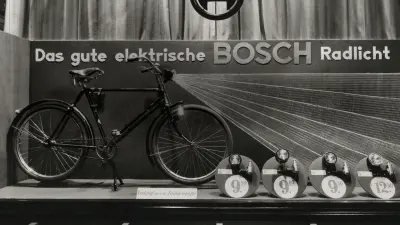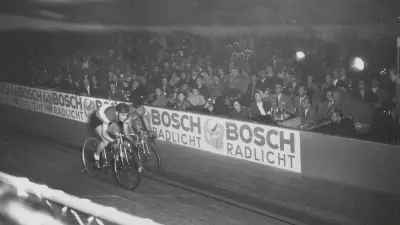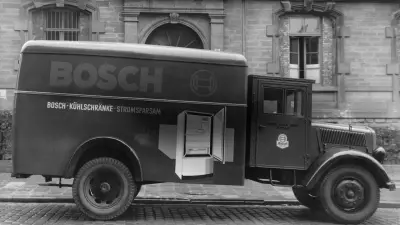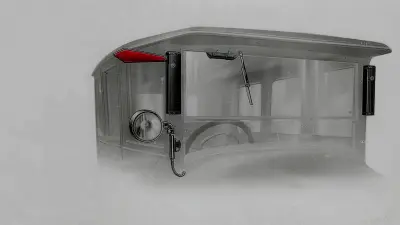“Have you got one too?” — On the trail of the Bosch bicycle light

“Take one with you!”
It could be as easy as the slogan from 1955 suggested. And a bicycle light was still something out of the ordinary back then, so it was good that cyclists didn’t need to break the bank to make sure they could be seen by pedestrians and motorists in the dark.
A crisis product
A bicycle light may appear to be a rather unusual product for Bosch, but the company was also targeting the non-motorized two-wheeler market to ensure the successful sale of electric appliances. Furthermore, the year the Bosch bicycle light was launched was a difficult time in Germany, which was still the most important Bosch market in those days. The hyperinflation in 1923 made money worthless almost overnight. A loaf of bread cost millions and anyone intending to make a sizeable purchase would have been well advised to use a trailer to transport all the notes.
The bicycle light thus appeared on the market at a time when the best that many people who needed a means of transport could manage was to make their bicycles a little safer. They couldn’t afford a motorcycle such as the first BMW R32 with boxer engine, which had just been launched.
“No more aggravation!”
The idea behind the bicycle light was simple. The light was produced directly by a dynamo that generated its electricity with a small roller located on the front wheel. This obviously resulted in a bright light at high speeds and none at all when the bicycle was stationary. The slogan “No more aggravation!” applied specifically to this situation. It encouraged cyclists to maintain a steady, relatively high speed. This technology with an educational effect thus had benefits for cyclists’ physical fitness.
Early bicycles lit in this way normally had a front light only. The back was ignored and at best had a reflector. This changed, though, with the increase in the number of automobiles and motorcycles on the roads from the 1930s onward and the mass motorization after the second world war. The back light obtained its electrical energy from the dynamo and, in most cases, the dynamo roller was on the front wheel. Initially, the connecting cable was wound around the frame tubes in a somewhat makeshift fashion. Subsequently, from the 1950s onward, it was often protected by the hollow frame tubes.

Light included

After its long boom period for Bosch, the bicycle light became unprofitable from the mid-1950s onward, because too many competitors were offering cheaper products. Bosch still manufactured the components in Stuttgart up till 1960 and in Sweden up till 1968. After that, it switched the relevant associates to manufacturing other products.
Despite this, Bosch still caters to two-wheelers today, albeit in a different way. The eBike drives that have been manufactured since 2011 make it possible and easier to cycle uphill and in windy conditions, and also to cover longer distances. The light is an integral part of these bikes. On an eBike with a Bosch drive, it can be switched on via the control unit on which the speed, battery level, and programmed route are displayed.
Author: Dietrich Kuhlgatz






